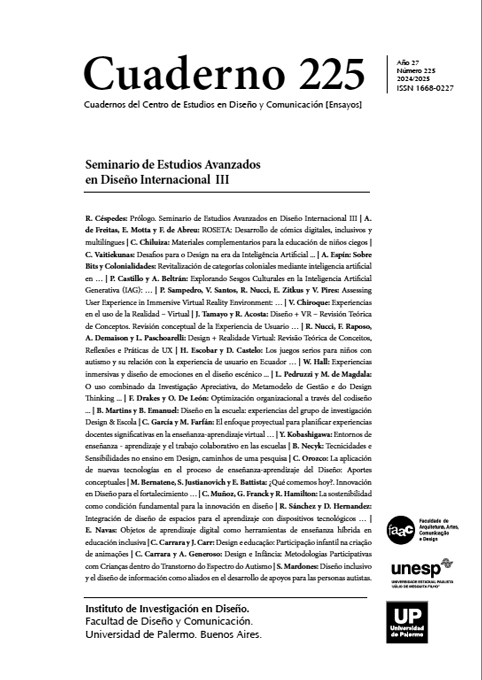Integración de diseño de espacios para el aprendizaje con dispositivos tecnológicos imitando principios ecológicos
Abstract
This theoretical research explores the innovative integration of learning space design with technological devices, drawing inspiration from fundamental ecological principles such as biotope, biocenosis, ecological relationships, habitat, ecological niche and biome.
References
Hogan, K. (2002). Small groups’ ecological reasoning while making an environmental management decision. Journal of Research in Science Teaching, 39(4), 341–368. https://doi.org/10.1002/tea.10025
Istance, D., & Kools, M. (2013). OECD Work on Technology and Education: innovative learning environments as an integrating framework.
Lockrey, S., & Bissett Johnson, K. (2013). Designing pedagogy with emerging sustainable technologies. Journal of Cleaner Production, 61, 70–79. https://doi.org/10.1016/j.jclepro.2013.05.005
Sclater, M. (2016). Beneath Our Eyes: An Exploration of the Relationship between Technology Enhanced Learning and Socio-Ecological Sustainability in Art and Design Higher Education. International Journal of Art and Design Education, 35(3), 296–306. https://doi.org/10.1111/jade.12125
Scott, E. E., Wenderoth, M. P., & Doherty, J. H. (2020). Design-based research: A methodology to extend and enrich biology education research. CBE Life Sciences Education, 19(3), 1–12. https://doi.org/10.1187/cbe.19-11-0245
Tarng, W., Ou, K. L., Yu, C. S., Liou, F. L., & Liou, H. H. (2015). Development of a virtual butterfly ecological system based on augmented reality and mobile learning technologies. Virtual Reality, 19(3–4), 253–266. https://doi.org/10.1007/s10055-015-0265-5
Wake, S. J., & Eames, C. (2013). Developing an “ecology of learning” within a school sustainability co-design project with children in New Zealand. Local Environment, 18(3), 305–322. https://doi.org/10.1080/13549839.2012.748723
Los autores/as que publiquen en esta revista ceden los derechos de autor y de publicación a "Cuadernos del Centro de Estudios de Diseño y Comunicación", Aceptando el registro de su trabajo bajo una licencia de atribución de Creative Commons, que permite a terceros utilizar lo publicado siempre que de el crédito pertinente a los autores y a esta revista.


